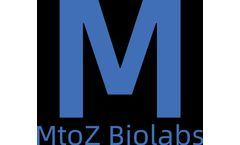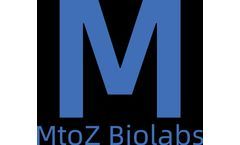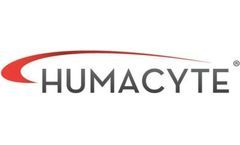Refine by
Immunohistochemistry Articles & Analysis
19 articles found
In addition, the FFPE kidney blocks serve as a resource for molecular studies. Techniques such as immunohistochemistry and in situ hybridization can be performed on these sections to study protein expression and gene activity, respectively. ...
Utilizing FFPE blocks derived from the rat thymus enables researchers to conduct various assays, including immunohistochemistry, in situ hybridization, and gene expression studies. These methods offer insights into the thymus’s cellular composition and functionality. ...
Flow Cytometry: This technique allows for the analysis of immune cell populations and their reactivity to specific antigens, providing insights into cross-reactive responses. Immunohistochemistry: By examining tissue sections, researchers can visualize the presence of antibodies or T cells and determine their localization, thereby uncovering patterns of cross-reactivity. ...
Fluorescence In Situ Hybridization (FISH) and Immunohistochemistry (IHC) are two powerful techniques widely used in biological and medical research. ...
This technique is vital for a variety of applications, including histological studies, immunohistochemistry, and molecular analysis. Why Use Mouse C57 Models? The C57BL/6 mouse strain, commonly referred to as C57, has become a standard in biomedical research due to its well-documented genetic background and immune system. ...
This epitope might show high similarity or significant differences in sequence across different species.From a purely practical perspective, compared to other forms of antigens, the synthesis of peptides also has the advantages of being simple, fast, and inexpensive.The Key to Designing the Right PeptidesPeptides have long been the preferred antigen for antibody development in ...
Linear epitopes are suitable for use in protein blotting (Western Blot) and paraffin-embedded immunohistochemistry experiments, and native epitopes are more suitable for immunoprecipitation (IP), cryosection immunohistology, flow cytometry, and enzyme-linked immunosorbent assay (ELISA). ...
This is particularly true for immunohistochemistry (IHC). IHC has now become an indispensable assay and is consistently performed in anatomic pathology to give specific diagnosis and subclassification of neoplasms. ...
CD BioSciences, a US-based biotechnology company focusing on the development of imaging technology, has announced the launch of its innovative line of Chromogenic Substrates for immunohistochemistry (IHC). These cutting-edge substrates offer superior signal sensitivity, long-term storage stability, enhanced safety, and user-friendliness, empowering researchers to unlock deeper ...
Analysis of tissue staining and immunohistochemistry showed that the natural hydrogel significantly accelerated the granulation tissue regeneration, angiogenesis and collagen deposition in chronic wounds, and significantly down-regulate the expression levels of TNF-α, IFN-γ, IL-6 and other inflammatory cytokines in tissues. ...
Contexte Myasthenia gravis (MG) is an autoimmune disease caused by the presence of antibodies directed against components of the muscle membrane located at the neuromuscular junction. In the majority of cases, these are autoantibodies directed against the acetylcholine receptor (AChR). The origin of the autoimmune response is not known, but thymic abnormalities and defective regulation of the ...
As staining procedures have advanced and immunohistochemistry is becoming more widely used, high-quality tissue sections are paramount for accurate interpretation of disease ...
Data from 144 tissue samples in the feasibility study demonstrated that SubB2M immunohistochemistry detected melanoma with 91% sensitivity and discriminated between malignant melanoma and benign skin lesions. SubB2M-based immunohistochemistry applications represent a new product opportunity for SubB2M in the $1.9b immunohistochemistry market. ...
Horseradish peroxidase is also commonly used in applications such as ELISA and immunohistochemistry. Horseradish peroxidase is ideal for these applications in many ways because it is smaller, more stable and less expensive than other popular alternatives, such as alkaline phosphatase. ...
Hematoxylin and eosin (H&E) or bacterial gram staining was performed using standard techniques. Immunohistochemistry was performed after 20 min of heat-mediated antigen retrieval (R&D Systems Acidic AR buffer) using antibodies for CD45 (Abcam #ab10558, diluted 1:200) or neutrophil elastase (Abcam #ab68672, diluted 1:100) applied overnight at 4C. ...
HER2 is recognized as an essential prognostic parameter in breast cancer. Usually interpretation of HER2 negative cases which has no membrane staining or has faint and weak incomplete cells and also positive cases (3+) that consist of strong and complete cell are easy but cells with moderate and weak HER2 staining (2+ or equivocal) require further analysis with fluorescence in situ hybridization ...
Formalin-fixed lung samples were subject to histopathology and immunohistochemistry (IHC) examinations. Results Feed homogenates from theTreatment I (NC) remained PRRSV PCR negative throughout the 0-21 d in vitro experiment. ...
Tissue distribution and cellular localization of OSP1 was investigated using Western blot and immunohistochemistry. The results indicate that this exposure regime delays testicular maturation in males and development of ovarian intersex in females. ...
Small aliquots were implanted intramuscularly in Wistar rats at a concentration of 30 mg/ml for up to 12 weeks. Standard histology and immunohistochemistry demonstrated low levels of inflammation at all time periods, absence of any fibrous capsule coupled with the presence of mature adipocytes within the degrading gel. It is concluded that the chemical architecture of HYADD3 gel ...














